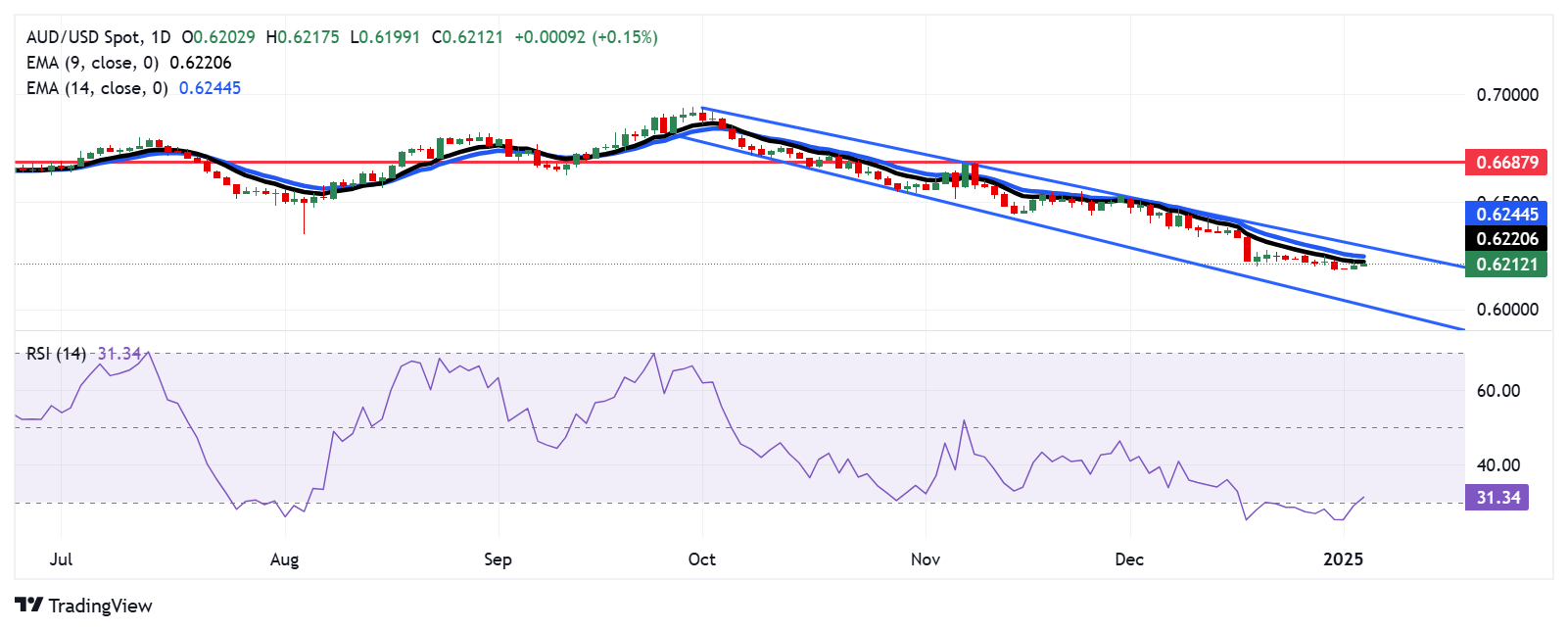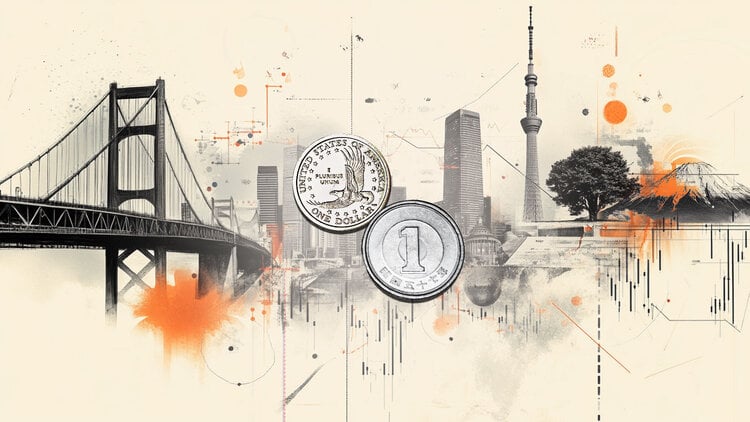- The Australian Dollar rises as the Financial Times reported that the PBoC is signaling possible rate cuts this year.
- The AUD recovered from two-year lows as stronger commodity prices provided support, particularly oil and gold.
- The US Dollar Index soared to a new multi-year high of 109.56 following the release of jobless claims on Thursday.
The Australian Dollar (AUD) extends its gains for the second consecutive session against the US Dollar (USD) on Friday. The AUD gained support following a Financial Times report indicating that the People’s Bank of China (PBoC) expects an interest rate cut this year at the right time. As close trading partners, any fluctuations in China’s economy tend to impact Australian markets.
The AUD/USD pair appreciates as the Australian dollar recovers from two-year lows while stronger commodity prices provide support, particularly oil and gold, benefiting Australia’s position as a major exporter of these resources. clue. Oil and gold stocks saw notable gains, including Woodside Energy and Northern Star Resources.
The Australian Dollar received support after China’s Caixin Manufacturing Purchasing Managers’ Index (PMI) was released on Thursday. Wang Zhe, economist at Caixin Insight Group, commented, “Supply and demand expanded. Manufacturers’ production and demand continued to grow as the market improved. The production indicator remained in expansionary territory for the 14th month consecutive, while total new orders increased for the third consecutive month.”
Daily Market Summary: Australian Dollar Strengthens Despite Fed’s Tough Policy Shift
- The US Dollar Index (DXY), which measures the performance of the US Dollar (USD) against six major currencies, rose to a new multi-year high of 109.56 following jobless claims in the United States (US). ) on Thursday before declining slightly to trade around 109.20 at the time of writing.
- Initial US jobless claims for the week ending December 27 were lower than expected. People filing for unemployment benefits for the first time were 211,000, below estimates of 222,000 and the previous release of 220,000.
- Traders are cautious about President-elect Trump’s economic policies, fearing that tariffs could raise the cost of living. These concerns were compounded by recent projections from the Federal Open Market Committee (FOMC), which indicated fewer rate cuts in 2025, reflecting caution amid persistent inflationary pressures.
- Escalating geopolitical tensions in the Middle East and the ongoing war between Russia and Ukraine are likely to support the USD, a traditional safe haven currency, in the near term. Analysts at Action Economics observed, “The dollar has been buoyed by growing growth concerns elsewhere against the backdrop of geopolitical risk.”
- China’s Caixin Manufacturing PMI unexpectedly fell to 50.5 in December, from 51.5 in November. The market had anticipated a reading of 51.7 for the month.
- The RBA board noted that if future data aligns with or falls below forecasts, confidence in inflation would strengthen and it would be appropriate to begin easing policy constraints. However, stronger than expected data could require maintaining restrictive policies for a longer period.
- Reserve Bank of Australia Governor Michele Bullock highlighted the continued strength of the labor market as a key reason why the RBA has been slower than other nations to begin its monetary easing cycle.
Technical Analysis: Australian Dollar maintains its position above 0.6200 near the nine-day EMA
AUD/USD is trading near 0.6210 on Thursday, maintaining a bearish outlook as it remains within a descending channel on the daily chart. However, the 14-day Relative Strength Index (RSI) has bounced above the 30 level, suggesting the possibility of a short-term upward correction despite the prevailing bearish trend.
The AUD/USD pair could find immediate resistance at the nine-day EMA at 0.6220, with the next hurdle at the 14-day EMA at 0.6244. A key resistance level is the upper boundary of the descending channel, around the psychological mark of 0.6300.
As for its support, the AUD/USD pair could navigate the region around the lower boundary of the descending channel, around 0.6020.
AUD/USD: Daily Chart
Australian Dollar PRICE Today
The table below shows the percentage change of the Australian Dollar (AUD) against major currencies today. Australian dollar was the strongest currency against the US dollar.
| USD | EUR | GBP | JPY | CAD | AUD | NZD | CHF | |
|---|---|---|---|---|---|---|---|---|
| USD | -0.10% | -0.12% | -0.16% | -0.12% | -0.13% | -0.20% | -0.11% | |
| EUR | 0.10% | -0.02% | -0.08% | -0.02% | -0.03% | -0.09% | -0.01% | |
| GBP | 0.12% | 0.02% | -0.02% | 0.00% | -0.01% | -0.07% | 0.01% | |
| JPY | 0.16% | 0.08% | 0.02% | 0.05% | 0.03% | -0.03% | 0.07% | |
| CAD | 0.12% | 0.02% | -0.01% | -0.05% | -0.02% | -0.08% | 0.00% | |
| AUD | 0.13% | 0.03% | 0.01% | -0.03% | 0.02% | -0.06% | 0.03% | |
| NZD | 0.20% | 0.09% | 0.07% | 0.03% | 0.08% | 0.06% | 0.09% | |
| CHF | 0.11% | 0.00% | -0.01% | -0.07% | -0.01% | -0.03% | -0.09% |
The heat map shows percentage changes for major currencies. The base currency is selected from the left column, while the quote currency is selected from the top row. For example, if you choose the Australian Dollar from the left column and move along the horizontal line to the US Dollar, the percentage change shown in the box will represent AUD (base)/USD (quote).
Australian Dollar FAQs
One of the most important factors for the Australian Dollar (AUD) is the level of interest rates set by the Reserve Bank of Australia (RBA). As Australia is a resource-rich country, another key factor is the price of its largest export, iron ore. The health of the Chinese economy, its largest trading partner, is a factor, as is inflation in Australia, its growth rate and the Balance of Trade. Market sentiment, that is, whether investors bet on riskier assets (risk-on) or seek safe havens (risk-off), is also a factor, with the risk-on being positive for the AUD.
The Reserve Bank of Australia (RBA) influences the Australian Dollar (AUD) by setting the level of interest rates that Australian banks can lend to each other. This influences the level of interest rates in the economy as a whole. The RBA’s main objective is to maintain a stable inflation rate of 2%-3% by adjusting interest rates up or down. Relatively high interest rates compared to other major central banks support the AUD, and the opposite for relatively low ones. The RBA can also use quantitative easing and tightening to influence credit conditions, with the former being negative for the AUD and the latter being positive for the AUD.
China is Australia’s largest trading partner, so the health of the Chinese economy greatly influences the value of the Australian Dollar (AUD). When the Chinese economy is doing well, it buys more raw materials, goods and services from Australia, which increases demand for the AUD and drives up its value. The opposite occurs when the Chinese economy does not grow as fast as expected. Therefore, positive or negative surprises in Chinese growth data usually have a direct impact on the Australian Dollar.
Iron ore is Australia’s largest export, with $118 billion a year according to 2021 data, with China being its main destination. The iron ore price, therefore, may be a driver of the Australian dollar. Typically, if the price of iron ore rises, the AUD also rises as aggregate demand for the currency increases. The opposite occurs when the price of iron ore falls. Higher iron ore prices also tend to result in a higher likelihood of a positive trade balance for Australia, which is also positive for the AUD.
The trade balance, which is the difference between what a country earns from its exports and what it pays for its imports, is another factor that can influence the value of the Australian dollar. If Australia produces highly sought-after exports, its currency will gain value solely from the excess demand created by foreign buyers wanting to purchase its exports versus what it spends on purchasing imports. Therefore, a positive net trade balance strengthens the AUD, with the opposite effect if the trade balance is negative.
Source: Fx Street
I am Joshua Winder, a senior-level journalist and editor at World Stock Market. I specialize in covering news related to the stock market and economic trends. With more than 8 years of experience in this field, I have become an expert in financial reporting.








